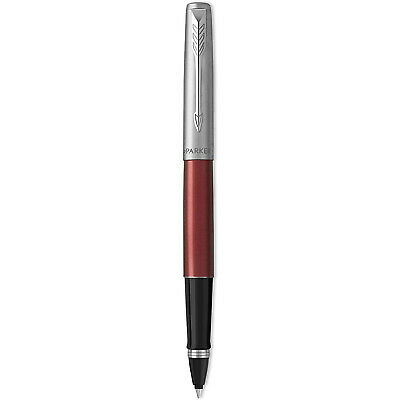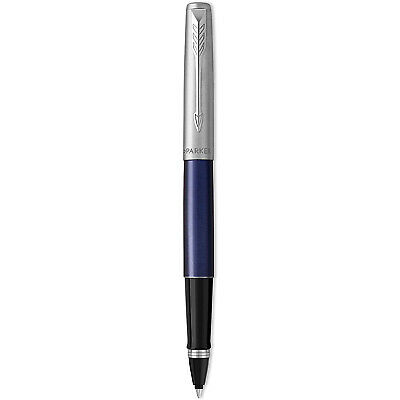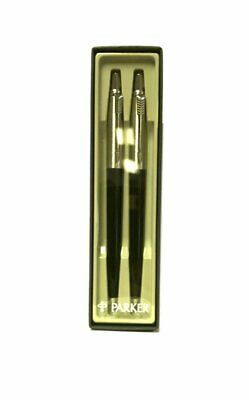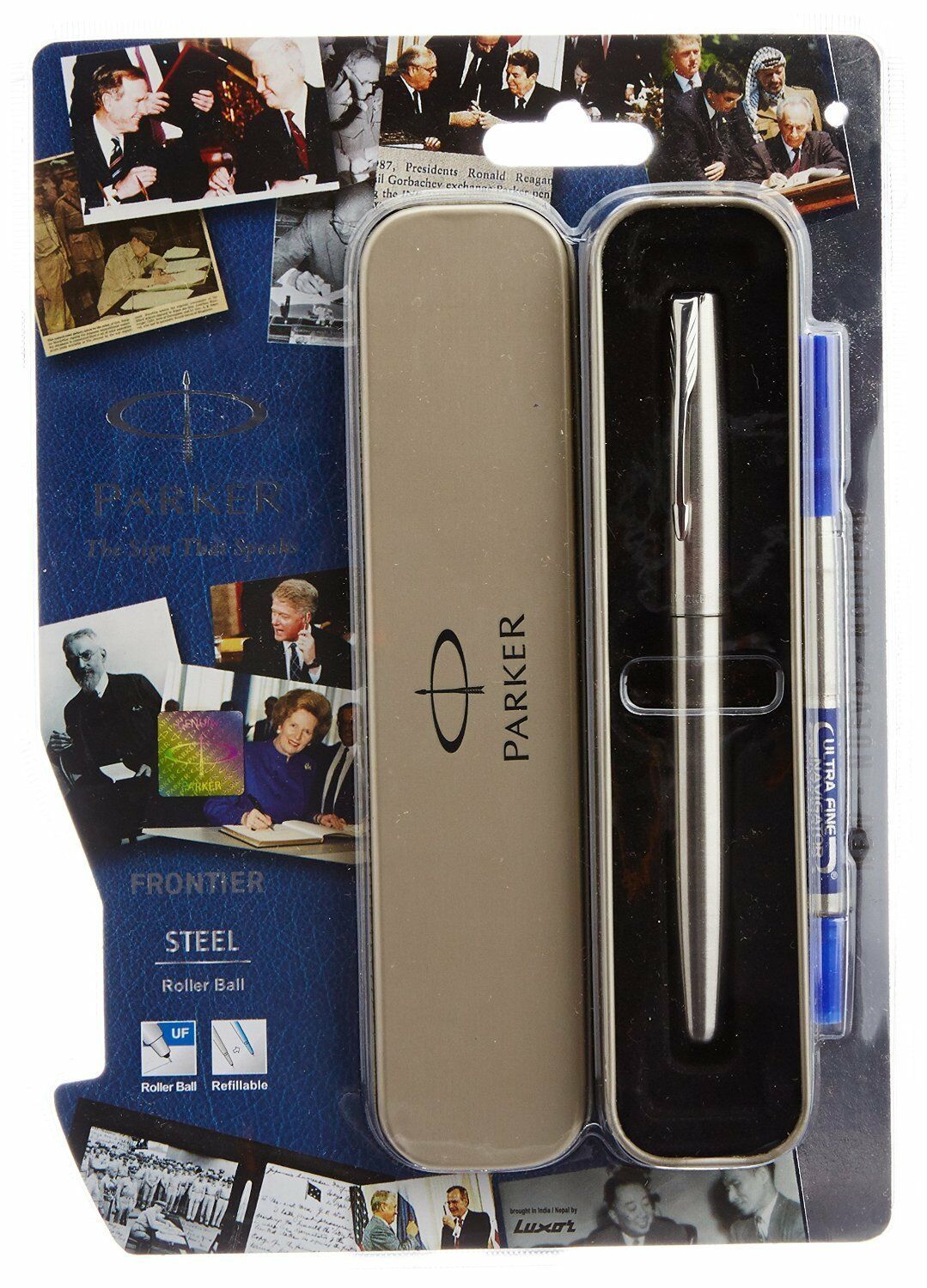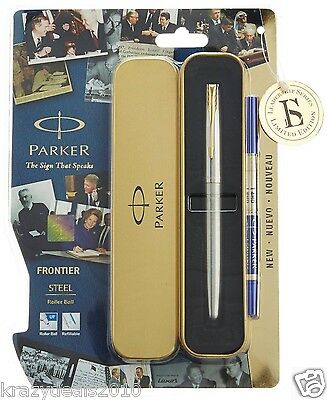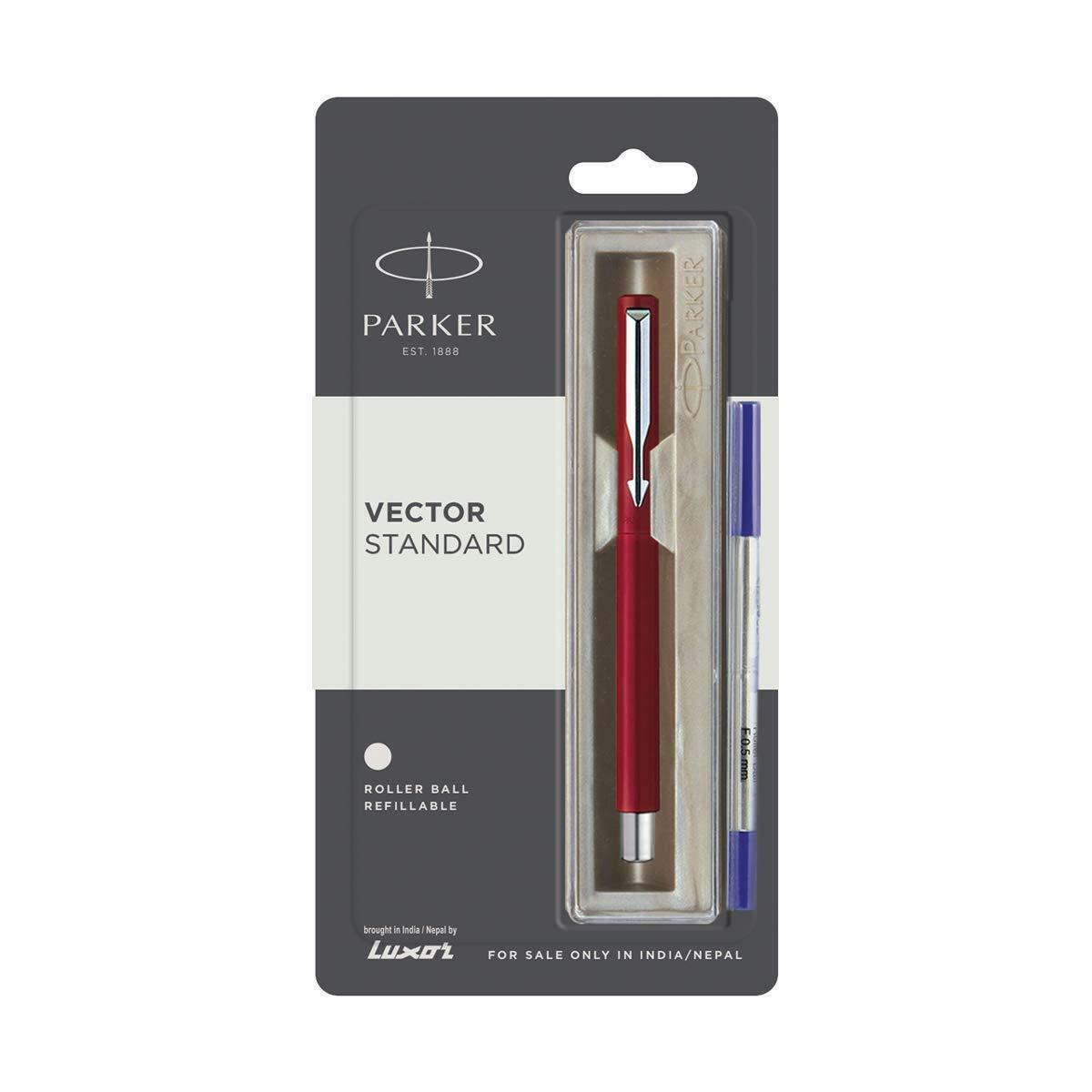-40%
Parker Sonnet Rollerball Pen in Moonbeam Laquer Finish w/ Gold Trim
$ 73.92
- Description
- Size Guide
Description
This listing is for a Parker Sonnet Rollerball pen in Moonbeam Laquer Finish w/ Gold Trim in new old stock condition in what appears to be the original case, with a protective cardboard sleeve. Pen comes with brand new refill cartridge.The World of Fine Pens and Pencils
Fountain
pens are descended from quill pens, with sophisticated metal nibs replacing the old feather quill shafts. They use water-based ink, dispensed from disposable cartridges, or from an onboard refillable reservoir called a "converter".
Fountain pens are pressure-sensitive, releasing more ink (for a thicker line) as pressure on the nib increases. Different sized nibs are available to suit different writing styles; if you're not sure which you need, start with a medium.
Calligraphy
pens are fountain pens with a different type of nib. Where normal fountain pen nibs have a ball-shaped tip that can write in any direction, calligraphy pen nibs are cut flat and so can only be pulled (not pushed) across the paper. The flat nib is needed to create letters with sharp tops, corners, and serifs. If buying your first calligraphy pen, look for one that includes a booklet of lessons.
Rollerball
pens have a ball point but they are not 'ballpoint' pens; instead they use a water-based ink that is smoother, 'wetter', and better-behaved than the oil-based ink of regular ballpoints. For this reason a rollerball ink cartridge is more likely to dry out over time. It's is also more likely to leak in your pocket or purse during temperature or pressure changes, which is why rollerball pens always have caps.
Ballpoint
pens use an oil-based ink that is thicker and 'drier' than the water-based ink of fountain and rollerball pens. Consequently, ballpoint pens tend not to dry out or to leak, and ballpoint writing dries very quickly. However, writing with a ballpoint requires more pressure and more hand exertion than with a rollerball, and the inkline is more likely to skip or clump. Many brands offer optional gel-based ink cartridges to somewhat correct these disadvantages.
If not sure which to buy
, the general guideline is that rollerball or fountain pens live indoor, while ballpoint pens are for going outdoor in pockets and purses, cars and airplanes.
Trim Options
Gold
trim is the most common trim used on fine pens and pencils. Trim components are initially cast or stamped from brass or steel for structural strength -- gold is far too soft and flexible to be (for example) a pocket clip. Brass is an alloy of copper and zinc which is usually a few shades darker than gold, and that is why the term "brassing" is used to describe dark spots on a pen where the gold plating has worn away.
The components are then plated in gold by suspending them in a chemical bath where a quantity of gold has been dissolved. When the chemical bath is electrified, dissolved gold atoms are attracted to the components, and the golds build up in layers on all exposed surfaces. Normal electroplating applies a dozen or so layers of gold atoms; heavier treatments are called "gold filled" or "gold rolled", and may involve hundreds of layers.
The result is the rich, luxurious, unmistakable gleam of gold. The karatage of the gold used then determines how the plated components behave. 24-karat gold is pure gold (24 out of every 24 parts are gold); it is the most resistant to chemical attack but the least resistant to scratching. Lower karatage gold, as low as 10-karat (10 parts out of every 24 are gold, or 42%) sacrifices chemical resistance in order to increase scratch resistance. There is no single correct answer to the question of which karatage is best... but all of them are always in style.
About the English Channel Collection
The English Channel Collection was born in 2010 when I discovered my love of classic pens.
It started when I inherited a large cache of beautiful old collectors' pens -- four decades' worth of Parker, Waterman, Cross, and Sheaffer. Initially, I picked out my favorites for personal use... but soon discovered just how delightful it is to write with a truly fine instrument. Then I found the world of pen collectors like you, and I knew I had to become a part of the community.
My products are fancy classic pens from the 1970s, 1980s, 1990s, and 2000s. They are carefully stored in my house where they are climate-controlled, safe, and comfortable. I personally clean, test, and approve each pen.
I guarantee each and every pen. I guarantee that you will love the pen. If you don't, for any reason, you can send it back, no problem. I will even pay the return shipping. Any of these lovely pens is a joy to own, but if something goes wrong, then I will take care of you.





